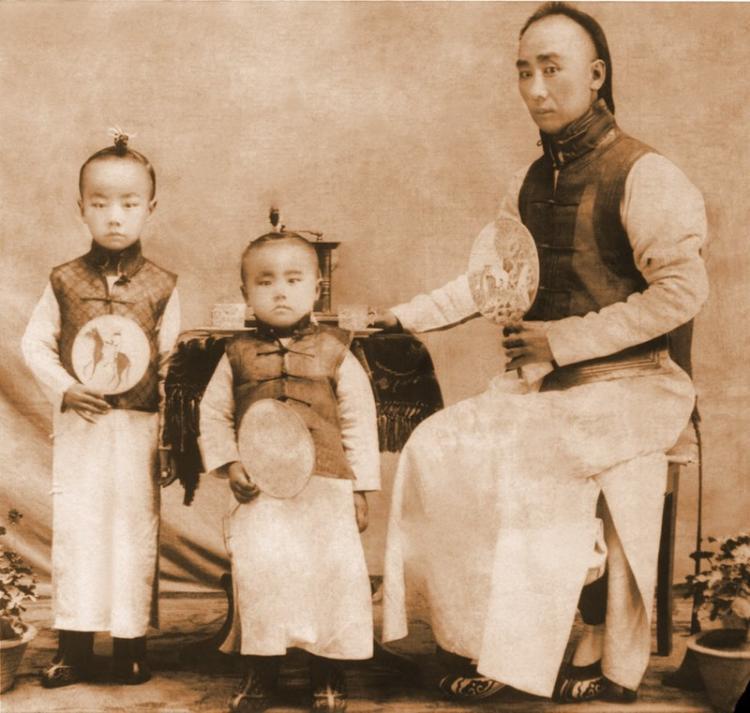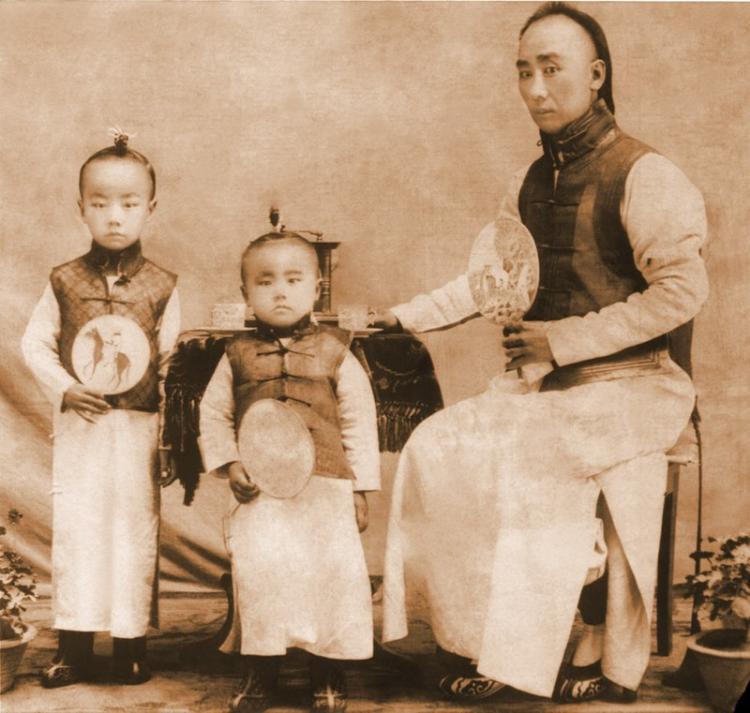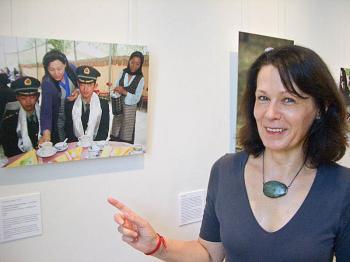Dr. Sabine Homilius, Hosting Director for Frankfurt’s City Library, assisted. Chinese photographers tried assiduously to capture the display on film to its best advantage, treating the mostly Chinese audience to a spontaneous display of flashing cameras.
Making the rounds through the exhibit, Curator/Exhibitor Bi Chunping commented on the photographs—approximately 100 of them—grouped by family clans. She had chosen them from among 1,000 that were at her disposal. They span approximately 100 years.
The pictures tell the stories of 30 Chinese families from various segments of society. Brief captions assist the viewers. Be they a cross section of exemplary or individual fates, all might be summed up with the Chinese saying: “Those who are content with less are truly rich.”
The exhibits ran the gamut from the mundane to the strange. The photos truly highlight what is often called “Chinese reticence and prudishness,” but also let the viewers see the dramatic, the contemporary, and humor, to wit—a proud young man sitting astride aCommunist Party).
A grandfather’s portrait hails from the Qing Dynasty, showing him with the stereotypical long braid and sporting traditional garb.
Grandmother’s bound feet are hidden in small slippers. She probably had to endure agonies to get her feet to the then-favored “lotus foot” size.
An eventual Harvard graduate, holding a Master’s Degree, is said to have learned the words to a Chinese children’s song,: “Chinese parents want their children to head for the battlefields. To return without honor is a disgrace.”
Unfortunately, the unimaginatively staged display quickly tires the viewers. A mutual visit with Chinese friends might be just the thing to liven up the atmosphere and might prove refreshing. Visitors’ comments would contribute much by encouraging a more discerning look at the photos, and perhaps put the official, patriotic halo in proper perspective. Director Homilius asks the German visitors to look for parallels or contrasts in their own lives—to create an “exhibit within an exhibit.”
A member of the China as Guest of Honor Office pointed out that “China has many publishing houses—at least 500.” That comment was perplexing. Germany lists 2,000 publishing houses that vie for customers and compete with each other.
Considering the comment, it behooves us to take any information from an official Chinese source with a grain of salt. We must not forget and always keep in mind that this exhibit makes no mention of the 80 million plus people who died due to crimes committed by the Chinese communist regime during the past 60 years, even though this small exhibit tries to divert people’s focus and lulls the viewer to focus on patriotic sentiments and family lore.
I almost neglected to cite a Chinese photographer’s comments. He boasted at the opening of the exhibit, “Almost everyone in China knows of Goethe’s The Sorrow of Young Werther.
It was an incongruous statement, considering that 60 percent of China’s population is still rural, 16.6 percent of China’s rural population lives on less than a dollar a day, and 46.7 percent live on less than 2 dollars a day. And of those, 80 percent or more are illiterate. How can they afford or buy a copy of—or even be remotely interested in—a poorly translated German author’s work whose culture they don’t identify with, nor would they care to. They need to fill their rice bowls!






